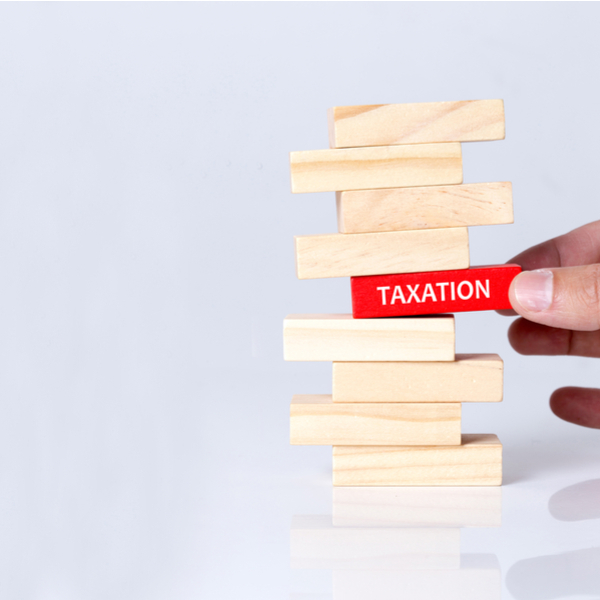Expectations of Common Man from Union Budget 2018
India is ready to witness Union Budget on the first of February. While last year’s budget was shadowed by demonetization woes, this budget comes after the implementation of Goods & Services Tax (GST). GST has subsumed many indirect taxes like excise duty, sales tax etc. and hence, this year’s budget speech will be shorter.
Just like each year, the common man has pinned many expectations from the Union budget and hopes that this budget will lessen the burden of taxes from his pocket. Here are a few of the Common Man’s expectations from the Union Budget 2018:
1. Increase in the Basic Exemption Limit/ Rejig of Taxation Slabs

For an income tax payer below 60 years of age, the basic exemption limit is Rs. 2,50,000 which means anyone earning less than that amount is not required to pay income tax. This limit has not been revised since last three years. There is an expectation that this limit will be revised in view of the prevailing inflation. Last year, Govt. had decreased the tax rate for the incomes from Rs. 2.50 lakhs to Rs. 5 lakh from 10% to 5%, thereby giving a maximum tax benefit of Rs. 12,500. However, the higher taxpayers were not given any respites. Any reduction in tax rates or favorable change in the tax slabs will leave a higher disposable amount in the hands of the people and will definitely have a favorable impact on Gross Domestic Product (GDP).
2. Increase in the Tax Saving Investments Limit

As per the provisions of Section 80C of the Income Tax Act, 1961, certain payments/ investments provide for deductions from the income tax and hence, eventually saves tax. Examples of such payments are life insurance premiums, tax-saving Mutual Funds and Fixed Deposits, investment in Public Provident Fund (PPF) etc. However, a ceiling of Rs. 1.50 lakhs has been prescribed for such deductions for the whole basket of tax saving payments/deductions. Even this limit has not been revised since some time now and hence, it is a genuine expectation that this limit be increased in order to incentivize savings and in the process, save tax too.
3. Increase in Exempt Allowance Ceiling Limit

As per the prevailing tax laws, business persons are allowed deductions for expenses incurred in course of earning their incomes. However, salaried persons are taxed for their gross income, subject to certain allowances being exempt like conveyance allowance, House Rent Allowance (HRA) etc. Few of the allowances are exempt without any limit owing to their official use etc. like helper allowance etc. However, most of the allowances are exempt up to certain limits. For example, conveyance allowance for commuting from home to office and back is exempt up to a maximum of Rs. 1,600 per month. Similarly, Children Education Allowance is exempt up to 100 per month. Ceiling limits for most of these allowances were set long back and hence, needs a revisit to provide relief to salaried taxpayers.
4. Preferential Taxation for Interest on Fixed Deposits

Fixed deposits have been the most preferred choice for savings by and large. However, the deposit rates have been going down since some time now and presently, the interest rates range from 6-6.50% for most of the banks for the majority of the deposit terms. The tax incidence tends to eat the already low returns from FDs. On the other hand, debt funds enjoy preferential tax rates for longer tenures (i.e. more than 3 years). As such, the investor into FDs also expects some relief on tax front for the already low-returns.
5. New IPOs in Pipeline – Disinvestment by Government

Each year, Govt. has been bridging the gap between the tax receipts and the fiscal deficit by funding it to some extent by disinvestment proceeds by selling off their part/complete stake in various companies. Govt. had set a target of Rs. 72,500 crores in the financial year 2017-18 from disinvestment proceeds (including Rs.46,500 crore as disinvestment of CPSEs, Rs.15,000 crore from strategic disinvestment and Rs.11,000 crore from listing of Insurance Companies). Govt. is all set to exceed the target by receipts close to Rs. 92,500 by the end of January 2018. Disinvestment by Govt. provides an opportunity to the investors to be a part-owner of these companies. The year 2017 has seen several Govt. companies getting listed like General Insurance Corporation of India Ltd., Cochin Shipyard Ltd., Housing and Urban Development Corporation Ltd. (HUDCO). Disinvestment targets for this year will also be looked at keenly by the investors as it will help them expect several new IPOs in the current fiscal. IPOs of Govt. Companies already in the pipeline include Rail Vikas Nigam Limited (RVNL), Mazagon Docks Limited (MDL), RITES Limited, Indian Renewable Energy Development Agency Limited (IREDA), Bharat Dynamics Limited (BDL).
Let’s hope this year’s budget brings some smiles on our faces by reducing our tax payouts and providing an optimistic outlook for the Indian economy. Do share your expectations from the Union Budget in the comments below.